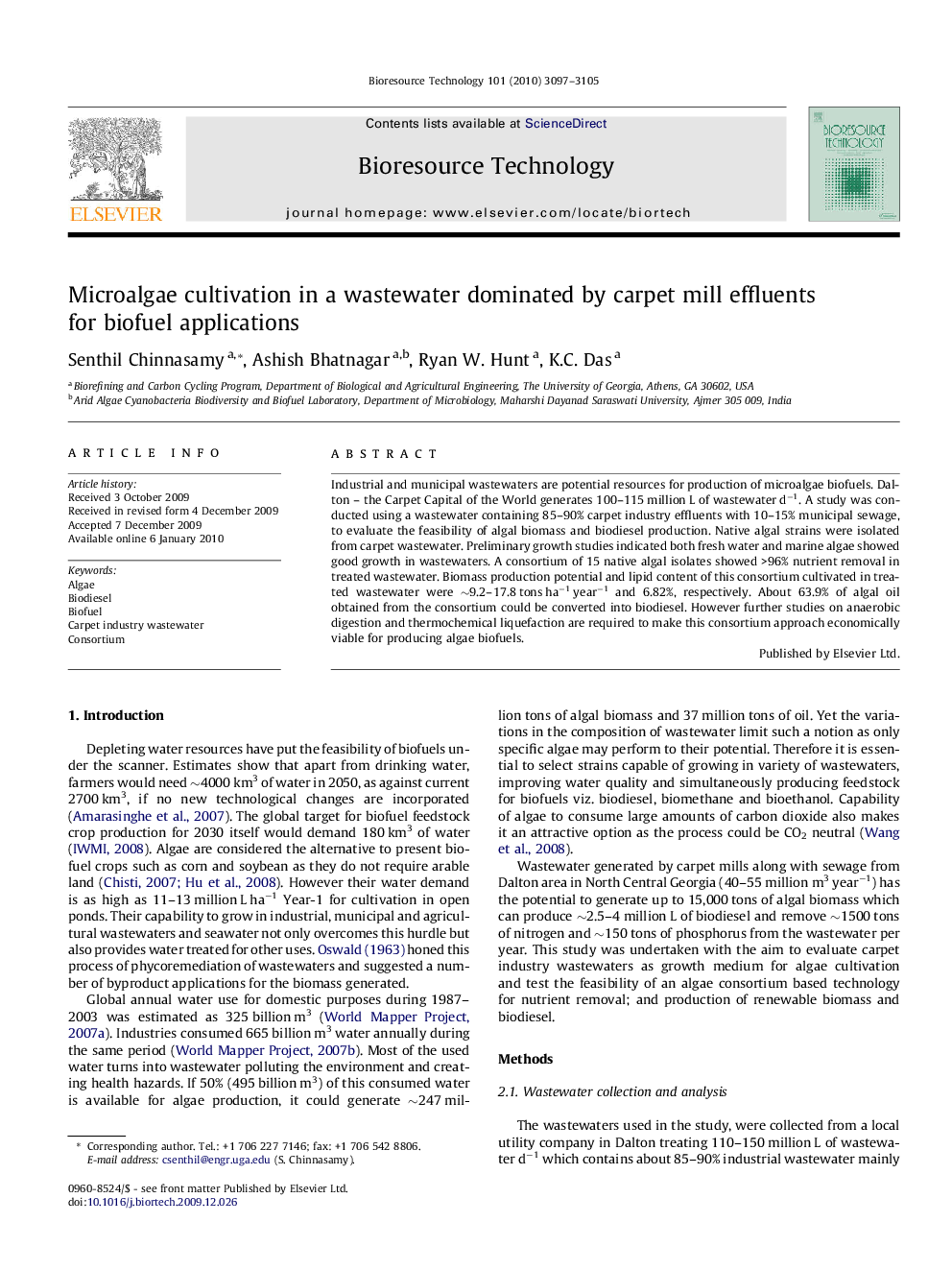| Article ID | Journal | Published Year | Pages | File Type |
|---|---|---|---|---|
| 683652 | Bioresource Technology | 2010 | 9 Pages |
Industrial and municipal wastewaters are potential resources for production of microalgae biofuels. Dalton – the Carpet Capital of the World generates 100–115 million L of wastewater d−1. A study was conducted using a wastewater containing 85–90% carpet industry effluents with 10–15% municipal sewage, to evaluate the feasibility of algal biomass and biodiesel production. Native algal strains were isolated from carpet wastewater. Preliminary growth studies indicated both fresh water and marine algae showed good growth in wastewaters. A consortium of 15 native algal isolates showed >96% nutrient removal in treated wastewater. Biomass production potential and lipid content of this consortium cultivated in treated wastewater were ∼9.2–17.8 tons ha−1 year−1 and 6.82%, respectively. About 63.9% of algal oil obtained from the consortium could be converted into biodiesel. However further studies on anaerobic digestion and thermochemical liquefaction are required to make this consortium approach economically viable for producing algae biofuels.
